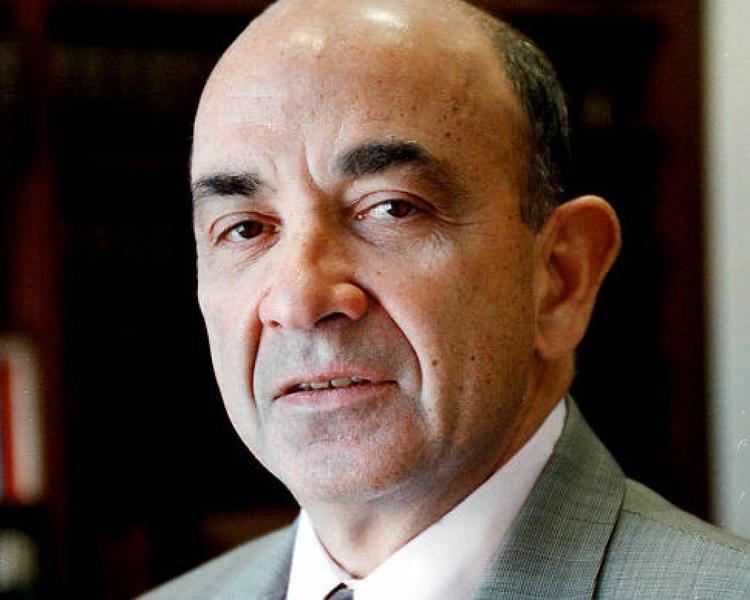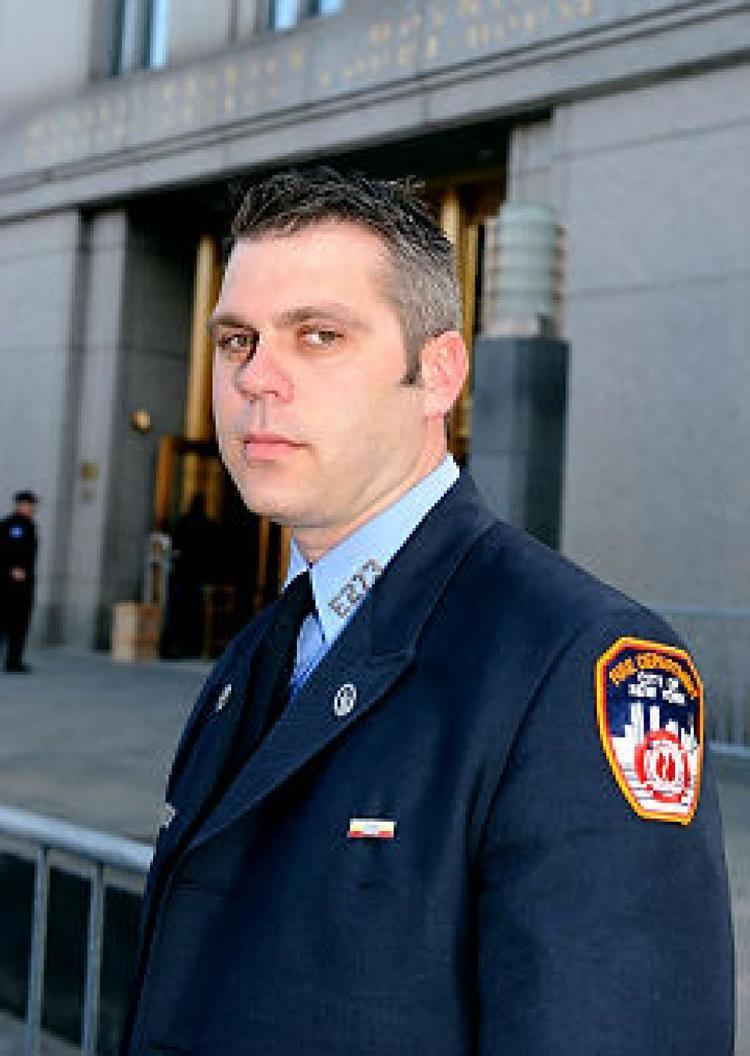Role Judge | Name Alvin Hellerstein | |
 | ||
Alma mater Columbia College, Columbia UniversityColumbia Law School Education Columbia Law School, Columbia College of Columbia University in the City of New York | ||
Alvin K. Hellerstein (born 1933) is a Senior United States District Judge of the United States District Court for the Southern District of New York and has been involved in several high-profile cases.
Contents
- Education and career
- Federal judicial service
- World Trade Center cases
- US military detainees
- Hope Poster Case
- References

Education and career

Hellerstein was born in New York City, New York. He received a Bachelor of Arts degree from Columbia College in 1954. He received a Juris Doctor from Columbia Law School in 1956 and was editor of the Columbia Law Review. He was a law clerk for Judge Edmund Palmieri of the United States District Court for the Southern District of New York from 1956 to 1957. He was in the United States Army, JAG Corps from 1957 to 1960. He was in private practice of law as co-head of the litigation department of Stroock & Stroock & Lavan LLP in New York City from 1960 to 1998.
Federal judicial service

Hellerstein is a United States District Judge of the United States District Court for the Southern District of New York. Hellerstein was nominated by President Bill Clinton on May 15, 1998, to a seat vacated by Louis L. Stanton. He was confirmed by the United States Senate on October 21, 1998, and received commission on October 22, 1998. He took senior status on January 30, 2011.
World Trade Center cases
In 2003, Hellerstein agreed to hear a consolidated master case against three airlines, ICTS International NV and Pinkerton's airport security firms, the World Trade Center owners, and Boeing Co., the aircraft manufacturer. The case was brought by people injured in the attacks, representatives of those who died, and entities that suffered property damage. In September 2004, just before the three-year statute of limitations expired, the insurers for the World Trade Center filed suit against American Airlines, United Airlines, and Pinkerton's airport security firm, alleging their negligence allowed the planes to be hijacked. Because the Air Transportation Act, which was passed after the September 11, 2001 attacks, limits the liability of airlines, aircraft manufacturers, and airports to the amount of their insurance coverage, this case will likely be combined with the consolidated master case filed in 2003.
On January 12, 2006, Hellerstein dismissed the last remaining property-damage claim against New York City, while leaving pending several other suits against other parties, among them the Port Authority of New York and New Jersey. According to Reuters, "[s]ix insurers sought repayment from the city for expenses arising from the collapse of a 47-story office building near the Twin Towers"; Hellerstein ruled New York had immunity.
The World Trade Center first responders (e.g., police and fire fighters) and the city conflicted with each other over the issue of payments for health costs of survivors among the first responders. On October 17, 2006 federal judge Alvin K. Hellerstein rejected New York City's motion to dismiss lawsuits that requested health payments to the first responders.
Alvin Hellerstein, on July 7, 2008 ruled that "the city is not required to re-sift through debris from ground zero in search of bits of human remains and remove it to a space where a cemetery might be built (thereby leaving the material from ground zero at Fresh Kills landfills). Plaintiffs have no property right in an undifferentiated, unidentifiable mass of dirt that may or may not contain the remains of plaintiffs' loved ones. Not every wrong can be addressed through the judicial process." Hellerstein urged the city to build a memorial and nature reserve at the site. Victims' families' counsel Norman Siegel criticized the ruling: "We are not prepared to leave hundreds of human remains of 9/11 victims on top of a garbage dump as their final resting place."
U.S. military detainees
On December 20, 2004, Hellerstein said he would deny a government request to delay a review of whether certain Central Intelligence Agency internal files related to Iraq should be made public. Judge Alvin Hellerstein's comments marked a victory for the American Civil Liberties Union (ACLU) and other groups seeking information about the treatment of detainees at Guantanamo and in Iraq.
On June 3, 2005, Judge Hellerstein ordered the government to release four videos from Abu Ghraib prison and dozens of photographs from the same collection as photos that touched off the Iraqi prisoner abuse scandal a year ago. The ACLU said the material would show that the abuse was "more than the actions of a few rogue soldiers."
Hellerstein said the 144 pictures and videos can be turned over in redacted form to protect the victims' identities. He gave the Army one month to release them.
The judge ordered the release after he viewed eight of the photos. They were given to the Army by a military policeman assigned to Abu Ghraib.
On September 29, 2005, in ACLU v. Department of Defense (caution: large PDF file), Hellerstein ordered the release of 87 more photographs and videotapes. [1] In April 2006, the Department of Defense informed the court that it was withholding an additional 29 photos and two videos relating to detainee treatment. [2] The ACLU reports that "details regarding the specific content of these additional images are unknown." [3]
In October 2003, the ACLU filed a lawsuit seeking information on treatment of detainees in U.S. custody and the transfer of prisoners to countries known to use torture. The ACLU contends that prisoner abuse is systemic.
On March 2009 Hellerstein received a three-page letter about the search for transcripts and other records of the 92 tapes the CIA recorded of the use of controversial interrogation techniques from United States Attorneys in New York. They asserted that the CIA had not been able to find any records of the contents of the tapes, and they asked for a two-week extension to keep looking. They also asserted that the CIA had not been able to determine the contents of the tapes by asking for descriptions from those who had viewed the tape, because they had no record of who had viewed the tapes.
Hope Poster Case
Judge Hellerstein presided over the Barack Obama "Hope" poster case. Shepard Fairey, the artist behind the poster, sued the Associated Press. He sought to establish that his Hope poster did not infringe the AP's copyright of a shot taken by AP freelancer Mannie Garcia. The AP countersued, accusing Fairey of infringement. When Fairey finally admitted to his attempted cover up, Hellerstein allowed Fairey's original counsel to withdraw. In January 2011, the AP and Shepard Fairey settled out of court.
